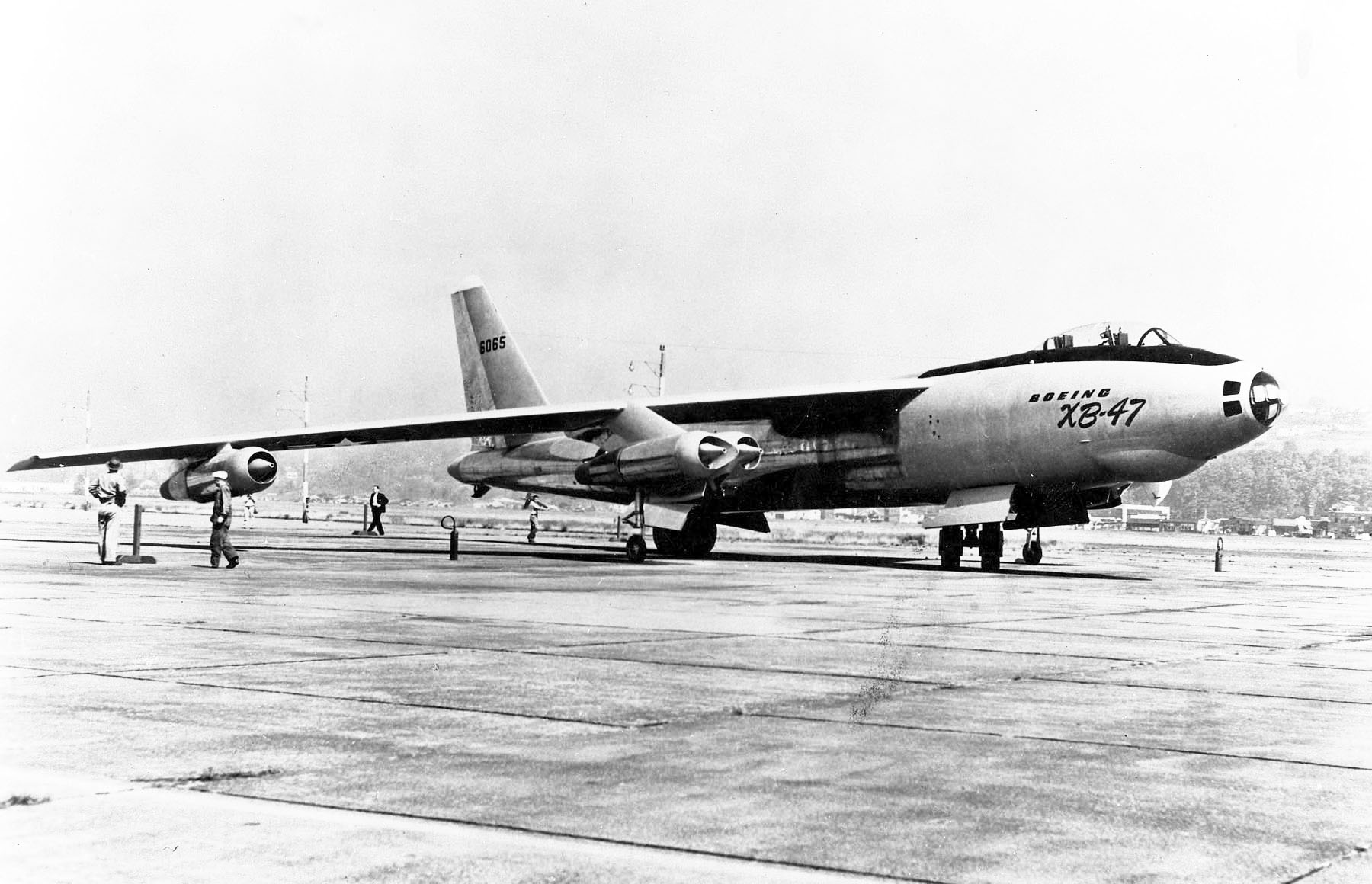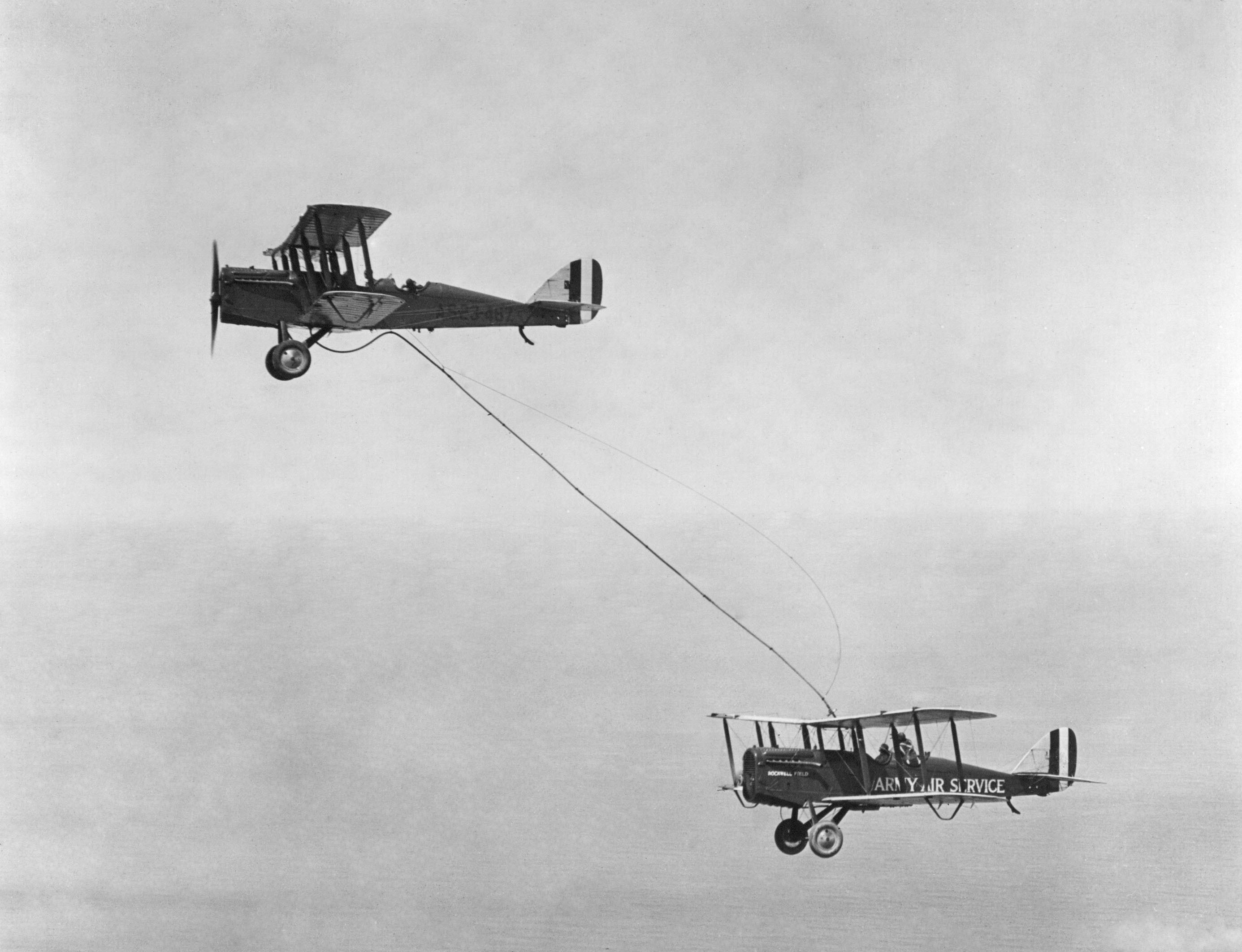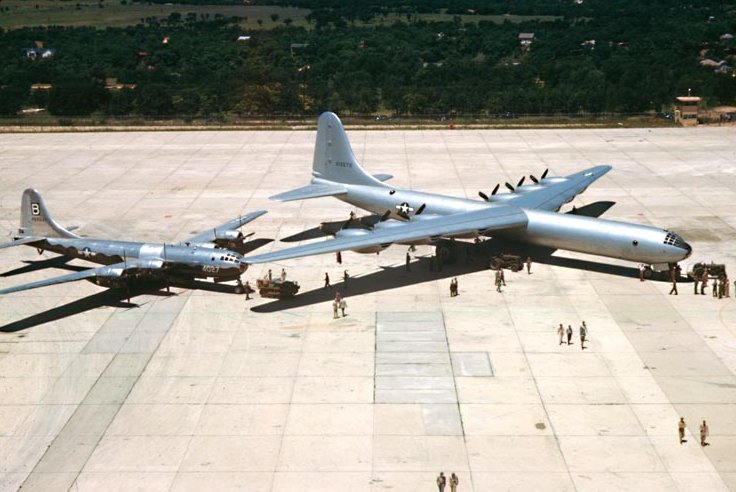|
KB-50
The Boeing B-50 Superfortress is an American strategic bomber. A post–World War II revision of the Boeing B-29 Superfortress, it was fitted with more powerful Pratt & Whitney R-4360 radial engines, stronger structure, a taller tail fin, and other improvements. It was the last piston-engined bomber built by Boeing for the United States Air Force, and was further refined into Boeing's final such design, the B-54. Although not as well known as its direct predecessor, the B-50 was in USAF service for nearly 20 years. After its primary service with Strategic Air Command (SAC) ended, B-50 airframes were modified into aerial tankers for Tactical Air Command (TAC) (KB-50) and as weather reconnaissance aircraft (WB-50) for the Air Weather Service. Both the tanker and hurricane hunter versions were retired in March 1965 due to metal fatigue and corrosion found in the wreckage of KB-50J, ''48-065'', which crashed on 14 October 1964. Design and development Development of an improved B ... [...More Info...] [...Related Items...] OR: [Wikipedia] [Google] [Baidu] |
Tactical Air Command
Tactical Air Command (TAC) is an inactive United States Air Force organization. It was a Major Command of the United States Air Force, established on 21 March 1946 and headquartered at Langley Air Force Base, Virginia. It was inactivated on 1 June 1992 and its personnel and equipment absorbed by Air Combat Command (ACC). Tactical Air Command was established to provide a balance between strategic, air defense, and tactical forces of the post–World War II U.S. Army Air Forces followed by, in 1947, the U.S. Air Force. In 1948, the Continental Air Command assumed control over air defense, tactical air, and air reserve forces. After two years in a subordinate role, Tactical Air Command (TAC) was established as a major command. In 1992, after assessing the mission of TAC and to accommodate a decision made regarding Strategic Air Command (SAC), Headquarters United States Air Force inactivated TAC and incorporated its resources into the newly created Air Combat Command. History ... [...More Info...] [...Related Items...] OR: [Wikipedia] [Google] [Baidu] |
Boeing KB-29
The Boeing KB-29 was a modified Boeing B-29 Superfortress for air refueling needs by the USAF. Two primary versions were developed and produced: KB-29M and KB-29P. The 509th and 43d Air Refueling Squadrons (Walker AFB, NM and Davis-Monthan AFB, AZ respectively) were created in 1948 to operate the KB-29M tankers. The 303d Bombardment Wing at Davis-Monthan AFB flew B-29s and KB-29s from 1951 to 1953 that provided training for strategic bombardment and air refueling operations to meet SAC's global commitments.Strategic-Air-Command.com's 303d BW Davis-Monthan AFB Deployed at , |
Boeing B-47 Stratojet
The Boeing B-47 Stratojet (Boeing company designation Model 450) is a retired American long- range, six-engined, turbojet-powered strategic bomber designed to fly at high subsonic speed and at high altitude to avoid enemy interceptor aircraft. The primary mission of the B-47 was as a nuclear bomber capable of striking targets within the Soviet Union. Development of the B-47 can be traced back to a requirement expressed by the United States Army Air Forces (USAAF) in 1943 for a reconnaissance bomber that harnessed newly developed jet propulsion. Another key innovation adopted during the development process was the swept wing, drawing upon captured German research. With its engines carried in nacelles underneath the wing, the B-47 represented a major innovation in post-World War II combat jet design, and contributed to the development of modern jet airliners. Suitably impressed, in April 1946, the USAAF ordered two prototypes, designated "XB-47"; on 17 December 1947, the fi ... [...More Info...] [...Related Items...] OR: [Wikipedia] [Google] [Baidu] |
Boeing B-29 Superfortress
The Boeing B-29 Superfortress is an American four-engined propeller-driven heavy bomber, designed by Boeing and flown primarily by the United States during World War II and the Korean War. Named in allusion to its predecessor, the B-17 Flying Fortress, the Superfortress was designed for high-altitude strategic bombing, but also excelled in low-altitude night incendiary bombing, and in dropping naval mines to blockade Japan. B-29s dropped the atomic bombs on Hiroshima and Nagasaki, the only aircraft ever to drop nuclear weapons in combat. One of the largest aircraft of World War II, the B-29 was designed with state-of-the-art technology, which included a pressurized cabin, dual-wheeled tricycle landing gear, and an analog computer-controlled fire-control system that allowed one gunner and a fire-control officer to direct four remote machine gun turrets. The $3 billion cost of design and production (equivalent to $ billion today), far exceeding the $1.9&n ... [...More Info...] [...Related Items...] OR: [Wikipedia] [Google] [Baidu] |
WikiProject Aircraft
A WikiProject, or Wikiproject, is a Wikimedia movement affinity group for contributors with shared goals. WikiProjects are prevalent within the largest wiki, Wikipedia, and exist to varying degrees within Wikimedia project, sister projects such as Wiktionary, Wikiquote, Wikidata, and Wikisource. They also exist in different languages, and translation of articles is a form of their collaboration. During the COVID-19 pandemic, CBS News noted the role of Wikipedia's WikiProject Medicine in maintaining the accuracy of articles related to the disease. Another WikiProject that has drawn attention is WikiProject Women Scientists, which was profiled by ''Smithsonian Magazine, Smithsonian'' for its efforts to improve coverage of women scientists which the profile noted had "helped increase the number of female scientists on Wikipedia from around 1,600 to over 5,000". On Wikipedia Some Wikipedia WikiProjects are substantial enough to engage in cooperative activities with outside organization ... [...More Info...] [...Related Items...] OR: [Wikipedia] [Google] [Baidu] |
Pratt & Whitney
Pratt & Whitney is an American aerospace manufacturer with global service operations. It is a subsidiary of Raytheon Technologies. Pratt & Whitney's aircraft engines are widely used in both civil aviation (especially airlines) and military aviation. Its headquarters are in East Hartford, Connecticut.Contact Us ." Pratt & Whitney. Retrieved on January 7, 2011. "Corporate Headquarters Pratt & Whitney 400 Main Street East Hartford, CT 06108." As one of the "big three" aero-engine manufacturers, it competes with and , although it has also formed joint ventures wit ... [...More Info...] [...Related Items...] OR: [Wikipedia] [Google] [Baidu] |
Aerial Refueling
Aerial refueling, also referred to as air refueling, in-flight refueling (IFR), air-to-air refueling (AAR), and tanking, is the process of transferring aviation fuel from one aircraft (the tanker) to another (the receiver) while both aircraft are in flight. The two main refueling systems are '' probe-and-drogue'', which is simpler to adapt to existing aircraft, and the '' flying boom'', which offers faster fuel transfer, but requires a dedicated boom operator station. The procedure allows the receiving aircraft to remain airborne longer, extending its range or loiter time. A series of air refuelings can give range limited only by crew fatigue/physical needs and engineering factors such as engine oil consumption. As the receiver aircraft can be topped up with extra fuel in the air, air refueling can allow a takeoff with a greater payload which could be weapons, cargo, or personnel: the maximum takeoff weight is maintained by carrying less fuel and topping up once airborne. Ae ... [...More Info...] [...Related Items...] OR: [Wikipedia] [Google] [Baidu] |
Cobham Plc
Cobham Limited is a British aerospace manufacturing company based in Bournemouth, England. Cobham was originally founded by Sir Alan Cobham as Flight Refuelling Limited (FRL) in 1934. During 1939, British airline Imperial Airways performed several non-stop crossings of the Atlantic using equipment provided by FRL. During the late 1940s, the company's aerial refuelling equipment broke new ground, including a round-the-world flight by specially-equipped Boeing B-50 Superfortresses in 1948 and the demonstration of the now-widely used 'probe and drogue' method of air-to-air refuelling for the first time in 1949. A wide range of aircraft have since been equipped with Cobham's refuelling equipment. The company has grown and diversified into various markets, often through acquisitions. Michael Cobham, Alan's son, took over its leadership during 1969. During 1994, the firm was formally renamed Cobham plc; by this point, the company had in excess of 10,000 employees and had operati ... [...More Info...] [...Related Items...] OR: [Wikipedia] [Google] [Baidu] |
Aerial Refueling
Aerial refueling, also referred to as air refueling, in-flight refueling (IFR), air-to-air refueling (AAR), and tanking, is the process of transferring aviation fuel from one aircraft (the tanker) to another (the receiver) while both aircraft are in flight. The two main refueling systems are '' probe-and-drogue'', which is simpler to adapt to existing aircraft, and the '' flying boom'', which offers faster fuel transfer, but requires a dedicated boom operator station. The procedure allows the receiving aircraft to remain airborne longer, extending its range or loiter time. A series of air refuelings can give range limited only by crew fatigue/physical needs and engineering factors such as engine oil consumption. As the receiver aircraft can be topped up with extra fuel in the air, air refueling can allow a takeoff with a greater payload which could be weapons, cargo, or personnel: the maximum takeoff weight is maintained by carrying less fuel and topping up once airborne. Ae ... [...More Info...] [...Related Items...] OR: [Wikipedia] [Google] [Baidu] |
Soviet Union
The Soviet Union,. officially the Union of Soviet Socialist Republics. (USSR),. was a List of former transcontinental countries#Since 1700, transcontinental country that spanned much of Eurasia from 1922 to 1991. A flagship communist state, it was nominally a Federation, federal union of Republics of the Soviet Union, fifteen national republics; in practice, both Government of the Soviet Union, its government and Economy of the Soviet Union, its economy were highly Soviet-type economic planning, centralized until its final years. It was a one-party state governed by the Communist Party of the Soviet Union, with the city of Moscow serving as its capital as well as that of its largest and most populous republic: the Russian Soviet Federative Socialist Republic, Russian SFSR. Other major cities included Saint Petersburg, Leningrad (Russian SFSR), Kyiv, Kiev (Ukrainian Soviet Socialist Republic, Ukrainian SSR), Minsk (Byelorussian Soviet Socialist Republic, Byelorussian SSR), Tas ... [...More Info...] [...Related Items...] OR: [Wikipedia] [Google] [Baidu] |
Boeing B-52 Stratofortress
The Boeing B-52 Stratofortress is an American long-range, subsonic aircraft, subsonic, jet-powered strategic bomber. The B-52 was designed and built by Boeing, which has continued to provide support and upgrades. It has been operated by the United States Air Force (USAF) since the 1950s. The bomber is capable of carrying up to 70,000 pounds (32,000 kg) of weapons,"Fact Sheet: B-52 Superfortress." ''Minot Air Force Base'', United States Air Force, October 2005. Retrieved: 12 January 2009. and has a typical Range (aeronautics), combat range of around 8,800 miles (14,080 km) without aerial refueling. Beginning with the successful contract bid in June 1946, the B-52 design evolved from a straight wing aircraft powered by six turboprop engines to the fi ... [...More Info...] [...Related Items...] OR: [Wikipedia] [Google] [Baidu] |
Convair B-36 Peacemaker
The Convair B-36 "Peacemaker" is a strategic bomber that was built by Convair and operated by the United States Air Force (USAF) from 1949 to 1959. The B-36 is the largest mass-produced Reciprocating engine, piston-engined aircraft ever built. It had the longest wingspan of any combat aircraft ever built, at . The B-36 was the first bomber capable of delivering any of the nuclear weapons in the U.S. arsenal from inside its four bomb bays without aircraft modifications. With a range of and a maximum payload of , the B-36 was capable of intercontinental flight without refuelling. Entering service in 1948, the B-36 was the primary nuclear weapons delivery vehicle of Strategic Air Command (SAC) until it was replaced by the jet-powered Boeing B-52 Stratofortress beginning in 1955. All but four aircraft have been scrapped. Development The genesis of the B-36 can be traced to early 1941, prior to the entry of the United States into World War II. At the time, the threat existed that Bat ... [...More Info...] [...Related Items...] OR: [Wikipedia] [Google] [Baidu] |










